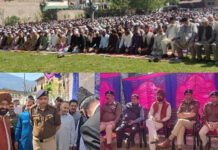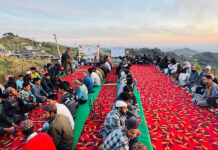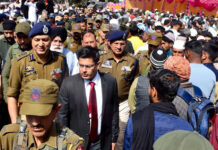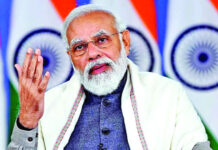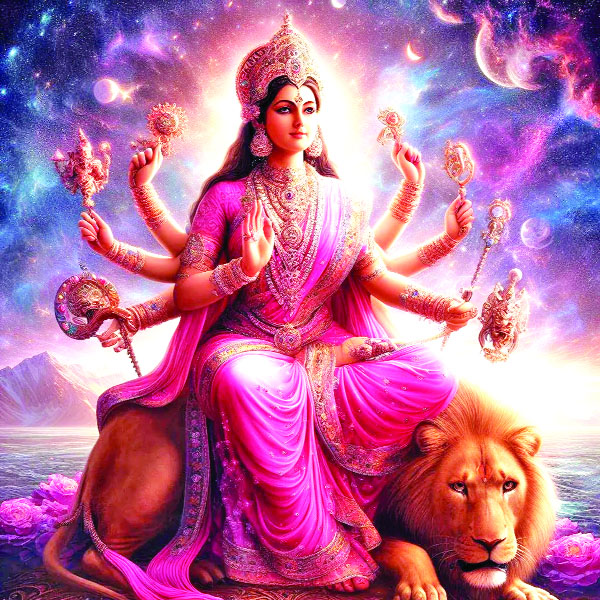The festival of “Nine Nights” is upon us and the preparations are in full swing. Navratri is indeed one of the most popular festivals of India and holds a special place in the hearts of millions of devotees.
Every year, Navratri is celebrated all over the country with great excitement. Many states celebrate the victory of Lord Rama over Ravana, while other north-eastern states worship the nine forms or avatarsof Goddess Durga.
Navratri begins with the worship of Maa Shailaputri and is followed by the worship of other avatars like Maa Bramhacharini, Maa Chandraghanta and Maa Skandmata. Each of these avatars signifies different qualities of Goddess Durga such as affection, love, compassion and wisdom.
Worship of Maa Katyayani
The sixth day of Navratri is dedicated to the worship of Maa Katyayani and signifies cheerfulness and joy. Believed to be the destroyer of all evil, she is seen as a warrior goddess who was able to bring peace to the world.
Maa Katyayani is one of the fiercest forms of Goddess Durga. She is also known as Mahishasurmardini (Killer of Mahishasura), as she was able to defeat and kill the evil demon Mahishasura.
History and Origin
It is told that long ago there was a sage by the name of Katyayana. He was a huge devotee of Goddess Shakti and spent days and nights in prayer. Sage Katyayana always wished for Goddess Shakti be born as his daughter.
During this period, an evil demon named Mahishasura was creating great trouble for the Gods. As the days went by, he gained more power and the Gods were increasingly worried about him. They prayed to Goddess Shakti and asked her to save them from the wrath of Mahishasura.
Goddess Shakti decided to take birth on Earth and end the reign of Mahishasura. She granted the wish of Sage Katyayana and was born on Earth as his daughter. She grew up to be a strong, beautiful fighter and came to be known as Katyayani, the daughter of Katyayana.
One day, two messengers of Mahishasura – Chandha and Mundha – saw Katyayani and were mesmerized by her beauty. They went back to their master and told him all about Katyayani Upon hearing this, Mahishasura got very happy and immediately asked another of his messenger – Dundubhi – to go and talk to Katyayani.
Dundubhi met Katyayani and told her all about Mahishasura. He told her about his greatness and boasted about how Mahishasura was the now the ruler of all three worlds. He told Katyayani that she should marry Mahishasura as they would make a great couple.
Katyayani smiled and told Dundubhi that according to her family tradition, Mahishasura must first defeat her in battle. Only then can they both get married. Dundubhi went back to Mahishaura and told him about this challenge. Mahishasura agreed and soon the preparations began.
A fierce battle took place between Katyayani and Mahishasura. She managed to defeat his demon soldiers and even killed most of them. When Katyayani and Mahishasura came face to face, he transformed himself into a buffalo. This proved to be a real challenge for Katyayani as she struggled to fight him.
However, Katyayani tricked Mahishasura and climbed onto his back. He was surprised by this move and tried very hard to shake her off, but failed. Katyayani then placed her foot on the back of Mahishasura’s neck, pierced him with her Trishul (trident) and cut his head off.
This is how Maa Katyayani killed the evil and powerful demon Mahishasura. In doing so, she saved the Gods from his menace and brought peace back into this world.
Goddess of the Sixth Day of Navratri
Since, Maa Katyayani defeated and killed Mahishasura, she is also known as Mahishasurmardini. In many parts of India, unmarried girls often observe fasts and pray to Maa Katyayani in order to get a loving and caring husband.
She is an incarnation of Goddess Durga and is depicted as having four hands. She holds a lotus in two hands, a sword in one and blesses her devotees with the fourth hand. It is believed that she protects her devotees from all kinds of evil and blesses them with happiness and joy.
Navratri Day 6 Colour:
The colour of the day on the sixth day of Navratri is grey. It represents balanced emotions and keeps the person down-to-earth. Devotees can wear this colour on this day to achieve all these qualities.
Maa Katyayani Bhog:
On Day 6 of Navratri, devotees seek the blessings of Goddess Katyayani, the sixth avatar of Maa Durga by offering honey as a special bhog.
Maa Katyayani Mantra, Prarthana and Stuti:
Om Devi Katyayanyai Namah
Chandrahasojjvalakara Shardulavaravahana
Katyayani Shubham Dadyad Devi Danavaghatini
Ya Devi Sarvabhuteshu Ma Katyayani Rupena Samsthita
Namastasyai Namastasyai Namastasyai Namo Namah

